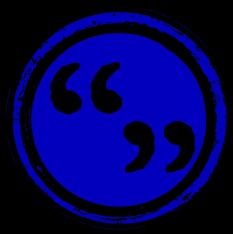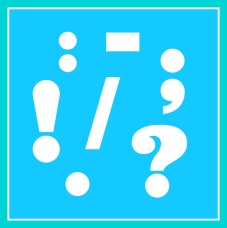Writing dialogue can be tricky, but it doesn’t have to be. After all, we participate in and hear several conversations per day.
Most of our conversations would be super boring to read for the most part. Take this conversation I had with a friend earlier:
 “Hi there!” I said.
“Hi there!” I said.
“Hi!” she said.
“How are things going today?” I said.
“Fine, just a bit tired after my trip,” she said.
“How was the convention?” I asked.
“Good, but long,” she said. “I set up my booth in the wrong spot and had to move immediately. Then some teenagers started hanging out next to me and I was sure they were going to start slacking at any moment, so I had to call security…”
Ugh. I would probably close whatever book contains this dialogue. But you could make it better by condensing it and adding some action and descriptors, like so:
“Hi there!” I said as she answered the phone.
“Hi!” she said, obviously happy to hear from me.
“How are things going today?” I said.
“Fine, just a bit tired after my trip,” she said.
I asked her about the convention, which she told me about in excruciating detail.
Much better to read. It also illustrates the difference between spoken dialogue and written dialogue. You can still relay the same information, just in a different way.
Dialogue Basics
One part of writing successful dialogue is formatting and style. Using the correct tags, punctuation, and paragraphs are almost as important as the quotations themselves.
Dialogue Tags
A dialogue tag is the he said or she said of the quotation. Many times, they are erroneously used as descriptors. For example:
“I hate cats,” he growled.
Keep your dialogue tags simple. Said will usually work just  fine. Use asked in the case of a question. Fancy words like denounced or proclaimed, or descriptive words like cried, teased, hissed, joked, smirked, winked, frowned, smiled, et cetera, may be fun to write but actually take the reader’s attention away from your writing.
fine. Use asked in the case of a question. Fancy words like denounced or proclaimed, or descriptive words like cried, teased, hissed, joked, smirked, winked, frowned, smiled, et cetera, may be fun to write but actually take the reader’s attention away from your writing.
You can sometimes get away with using more descriptive dialogue tags, but use them sparingly. Instead, use the narration and dialogue itself to show the emotion or action. Remember to show and not tell.
“I hate cats,” he said, growling like a dog.
Dialogue beats
A dialogue beat is a brief description of action in between the dialogue that helps dialogue become livelier.
“Let’s do this,” Jean said as she wiped the sweat from her forehead. “I got places to be.”
Use dialogue beats to break up the spoken words of your characters so the conversations aren’t too boring for the reader. Again, less is more. Use these only when the action is necessary, otherwise you’ll end up on the other end of the spectrum with too many descriptions.
Capitalization
 It is a common mistake to capitalize the pronouns in dialogue tags and beats. They are always lower case unless at the beginning of a sentence.
It is a common mistake to capitalize the pronouns in dialogue tags and beats. They are always lower case unless at the beginning of a sentence.
“Capitalization confuses me,” she said.
She said, “Capitalization confuses me.”
Punctuation
 The first thing to remember about punctuating dialogue is that the punctuation, with very few exceptions, goes inside the quotation marks. If you have a question about whether or not you should put it inside, put it inside. 99% of the time, you will be right.
The first thing to remember about punctuating dialogue is that the punctuation, with very few exceptions, goes inside the quotation marks. If you have a question about whether or not you should put it inside, put it inside. 99% of the time, you will be right.
“Where are we going?” she asked.
“Nowhere,” he replied.
“Well, tell me when we get there.”
When the dialogue tag or beat interrupts the quotation, set it off with commas. Also notice that the first word of the second half is lower case.
“We will be there in,” he said as he checked his watch, “fifteen minutes.”
*Note: The punctuation rules here are for American writers. Rules in different countries will vary.
Long Quotations
When writing very long quotations that are more than one paragraph, only use end quotes when your character is done speaking. Don’t put them at the close of the first paragraph.
He began his speech. “Lorem ipsum dolor sit amet, consectetur adipisicing elit, sed do eiusmod tempor incididunt ut labore et dolore magna aliqua. Ut enim ad minim veniam, quis nostrud exercitation ullamco laboris nisi ut aliquip ex ea commodo consequat.
“Duis aute irure dolor in reprehenderit in voluptate velit esse cillum dolore eu fugiat nulla pariatur. Excepteur sint occaecat cupidatat non proident, sunt in culpa qui officia deserunt mollit anim id est laborum.”
When to Start a New Paragraph
Start a new paragraph each time you change speakers in your text to show your readers that someone new is speaking. You don’t have to use dialogue tags every time the person speaks, but do it frequently enough that the reader doesn’t have to second guess who’s talking.
Action
If your speaking character is engaged in action, keep the description of the action in the same paragraph as the dialogue. Spreading it out only confuses the reader.
Dialogue as an Information Dump
Don’t rely on dialogue for story exposition—an information dump—to give the reader details about plot or backstory through what the characters are saying. The result is dialogue that sounds completely fake.

“As you know,” Milton said, “I have a PhD in pharmacology and trained at Harvard, so I can get this prescription filled for you right away.”
Dialogue should set the scene, give insight into characters, give the reader a reminder, foreshadow, and advance action. Don’t use it just to convey information. Put your dialogue to work for you. It should be multitasking and doing many things at the same time.
Vernacular
Vernacular is the specialized spoken language of a particular group, profession, region, country, etc.—also known as dialect. It is the spelling, sounds, grammar and pronunciation that distinguishes that group from other groups around them. It is a very powerful tool of characterization, but it is easily overused.
Using too many made up words to convey the vernacular slows the flow of the story and interrupts the reader as oftentimes he doesn’t know what the heck you’re talking about. Take this example from The Adventures of Huckleberry Finn by Mark Twain from the character Jim.
“I didn’ know dey was so many un um. I hain’t hearn ‘bout none un um, skasely, but ole King Sollermun, onless you counts dem kings dat’s in a pack er k’yards. How much do a king git?”
Ouch. I know it’s English, but it’s not at all readable. Here is a more palatable version:
“I din’ know dere was so many of ‘em. I ain’t heard ‘bout none of ‘em, ‘cept King Sollerman, ‘less you counts dem kings that’s in a pack o’ cards. How much do a king git?”
It’s washed out, but it does get the message to the reader.
The key is to stay consistent. Do your research. Find the common spellings of the terms you’d like to use. Find how people actually talk in the regions you’re referring. Don’t just make up your own terms. This will just confuse and alienate the reader. Also stay consistent in your own writing. If you use vernacular in one sense, don’t change the spelling later on. There is an art form to using vernacular.
Dialect and Slang
Use care when writing dialect. An accent alone does not make character come to life and, like everything else, it can be overdone. If overdone, it can turn your character into a stereotype or a joke. It can also annoy or even offend your reader. A little dialect goes a long way.
That being said, word choice can tell your reader a lot about ethnicity, sexuality, background, or appearance. Keep your character’s voice in mind, but make sure it’s readable (see above). Dialect in dialogue should read like real speech. Dialogue doesn’t have to be completely grammatically correct, but there should be a balance between realistic speech and readability.
When to Abandon the Rules
Speech tends to be more informal than written words, so know when to toss formal grammar out. Speakers tend to contract words (don’t instead of do not, can’t instead of cannot, etc.) and sometimes omit words, especially in the case of vernacular and dialect.
Speakers are more likely to make errors such as “There’s no more grapes” rather than saying “There’re no more grapes” which is correct, but no one talks like that.
Comma splices in an essay will make a teacher’s hair fall out, but can make dialogue less clunky if used with restraint.
Sentence fragments are a necessity to constructing good dialogue.
These are all examples of when you can break grammar rules to make your dialogue smoother.
All of this put together (plus your talent of course) will make your dialogue snap and pop. Do  not fear, you don’t have to memorize all of this. The easiest way to get objective examples of correct dialogue usage is to read. Then read. Then read some more. Familiarize yourself with how other authors use dialogue to help with the flow of your own writing.
not fear, you don’t have to memorize all of this. The easiest way to get objective examples of correct dialogue usage is to read. Then read. Then read some more. Familiarize yourself with how other authors use dialogue to help with the flow of your own writing.
And as with anything, practice make perfect. Even the best writers don’t always get it right. Keep writing and soon you will be able to mold your words into the message that you intend. And it will rock.

